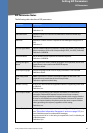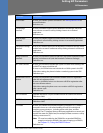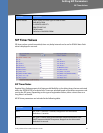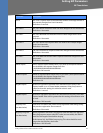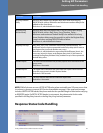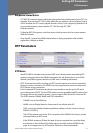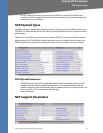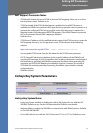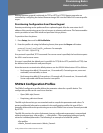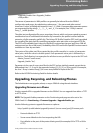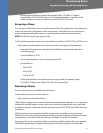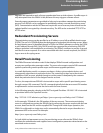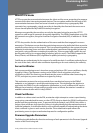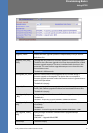
Linksys SPA9x2 Phone Administration Guide 54
Provisioning Capabilities
Provisioning Basics
5
Provisioning Basics
The Provisioning Tab and its fields are for service provider use only and are not needed in non-
SP deployments. This chapter discusses:
• ”Provisioning Capabilities” section on page 54
• ”Upgrading, Resyncing, and Rebooting Phones” section on page 56
• ”Redundant Provisioning Servers” section on page 58
• ”Retail Provisioning” section on page 58
• ”Automatic In-House Preprovisioning” section on page 59
• ”Configuration Access Control” section on page 59
• ”Using HTTPS” section on page 59
• ”Firmware Upgrade Parameters” section on page 61
• ”Sample Configuration File” section on page 62
VARs and service providers should refer to other documentation, depending on your
configuration:
• Linksys Provisioning Guide (service provider login required)
• Linksys Voice System Administration Guide
• Service provider documentation
Provisioning Capabilities
The SPA9x2 provides for secure provisioning and remote upgrade. Provisioning is achieved
through configuration profiles transferred to the device via TFTP, HTTP, or HTTPS.
The SPA9x2 can be configured to automatically resync its internal configuration state to a
remote profile periodically and on power up. The automatic resyncs are controlled by
configuring the desired profile URL into the device.
The SPA9x2 accepts profiles in XML format, or alternatively in a proprietary binary format,
which is generated by a profile compiler tool, SIP Profile Compiler (SPC), available from Linksys.
The SPA9x2 supports up to 256-bit symmetric key encryption of profiles. For the initial transfer
of the profile encryption key (initial provisioning stage), the SPA9x2 can receive a profile from
an encrypted channel (HTTPS with client authentication), or it can resync to a binary profile
generated by the Linksys SIP profile compiler. In the latter case, the SIP profile compiler can
encrypt the profile specifically for the target SPA9x2, without requiring an explicit key
exchange.



